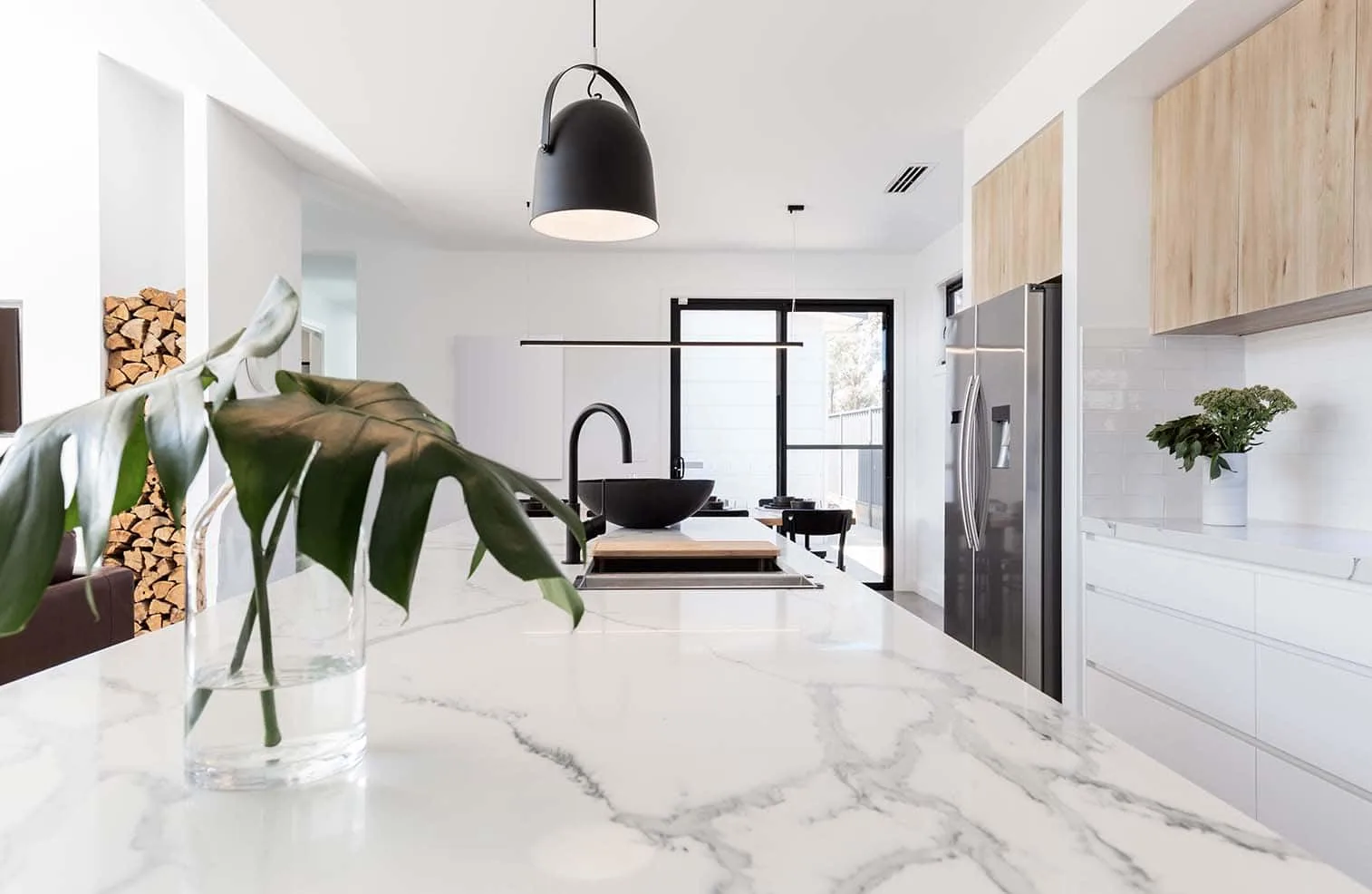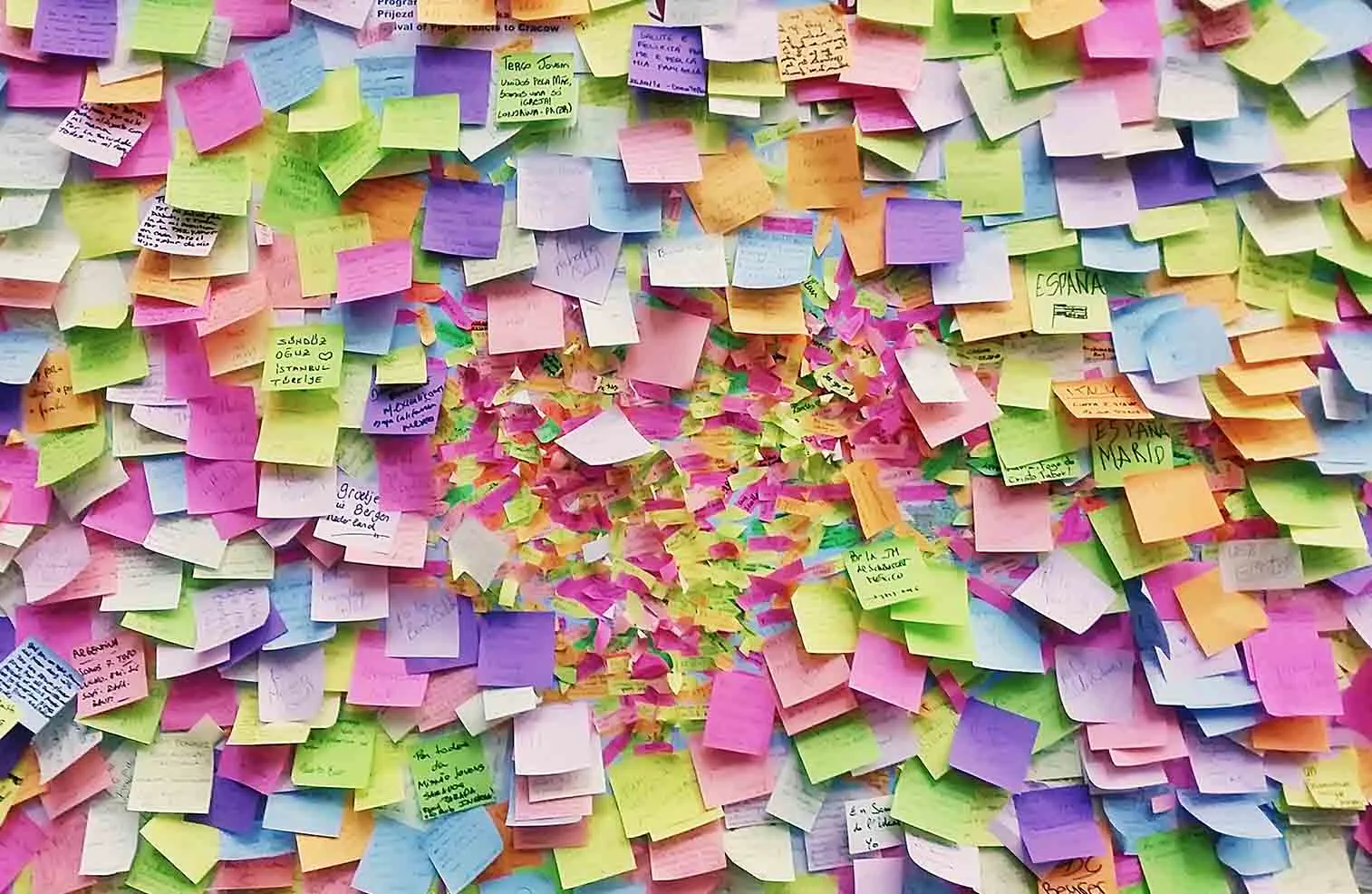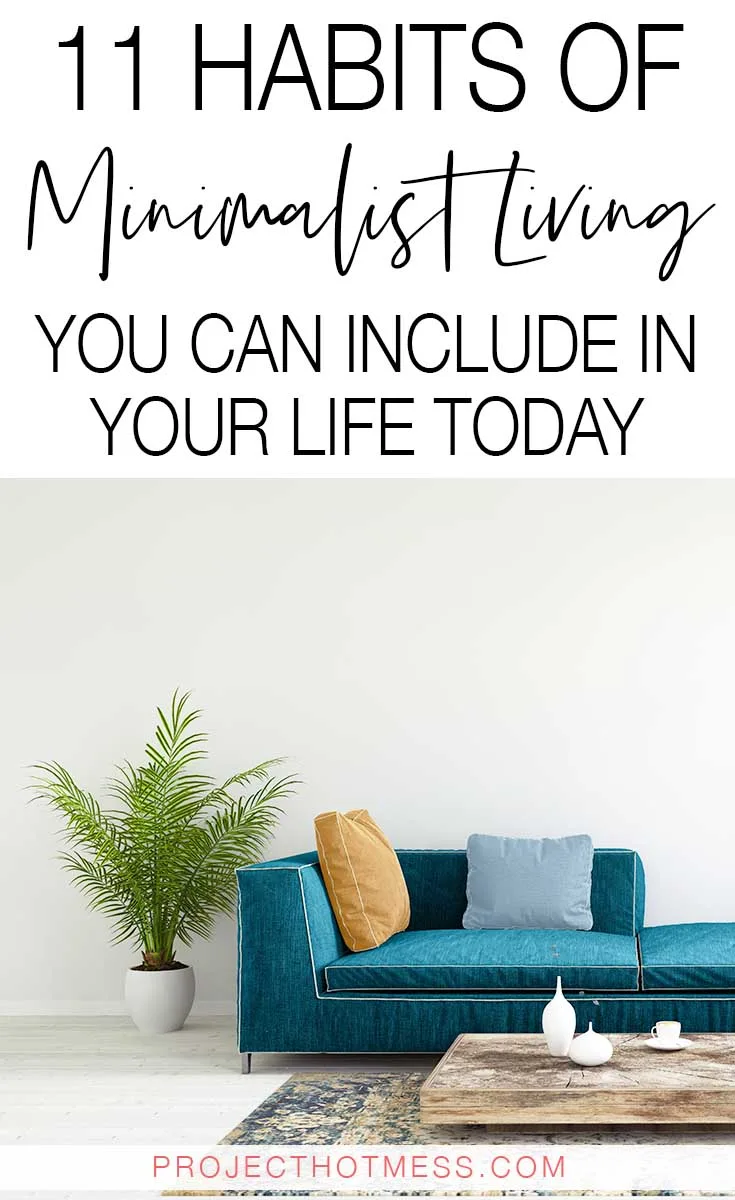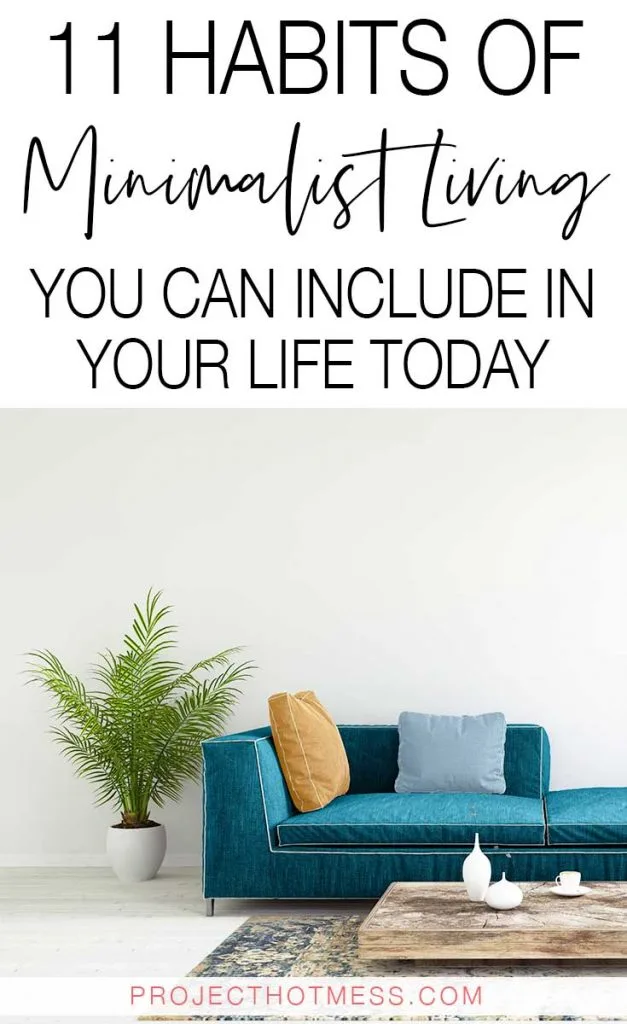Minimalism isn’t just something people ‘do’, it’s a way of life, and as such, there are certain habits of minimalist living you can adopt in order to live a simpler, less cluttered and happier life.
While there’s no overnight easy way to become a minimalist, or live a more minimalist lifestyle, it doesn’t have to take you a long time to achieve your simple living goals.
There are some great things you can do to create a more simple life, reduce your worldly possessions (if that’s what you want your minimalist lifestyle to look like) and reap the benefits of minimalist living in your daily life.
I have to warn you, it becomes addictive. Once you’ve started decluttering and once you’ve started looking for simpler, more minimalist ways of living, everything changes.
They don’t call it a minimalist movement because it’s a passing trend. This is a massive shift in how we think and how we live in our world.
Some people take their time to find their feet in minimalism and find how it suits their lifestyle best, which is amazing. There is no ‘right’ way.
You can create your own minimalist lifestyle that suits you, suits your personality and you make it whatever you want it to be.
You may have seen examples of extreme minimalism in recent years where people live with big open spaces, white walls, have very few possessions, and meditate on a daily basis.
But this doesn’t have to be the way you live as a minimalist.
If your only goal of a minimalist lifestyle is to reduce the hard work you do, create extra time in your day, spend less time on social media, and enjoy the little things in life, then this is a great way to help you get there.
Here are some ideas habits of minimalist living you can adopt today and add into your life.
1 – Decluttering Is An Ongoing Process
When you start out on your minimalist living venture, the first step, and the best way to start, is to declutter your home.
From your closet through to your pantry, your living room through to your shed, the initial decluttering process is huge and very cathartic.
However, your decluttering process doesn’t stop there.
Often it will take a number of decluttering sessions before you achieve a level of possessions that you are comfortable with.
It doesn’t just happen once and it’s done, it’s an ongoing process.
Even then, decluttering is something you’ll keep doing.
When you upgrade your old kitchen mugs to new ones, you’ll move the old set on (either passing to someone else or throwing them out).
Because when you’re settled into minimalist living, you’ll understand that for every new item you bring into your home, you’ll take the time to evaluate if there’s something you need to move on at the same time.
You may not, you may need the extra item, but you may find you replace and upgrade too.
Each time you declutter, it will take less time as you won’t have as much stuff to go through, but little bit by little bit, you will become more in tune with what you have in your home, your material possessions, and you may find you even want to bring fewer things into your home.
You can find our ‘Things I Can Declutter’ list in the free Mini Life Planner:
2 – Only Make Mindful Purchases
Say goodbye are the days of mindlessly wandering around the stores, grabbing whatever items take your fancy and impulse purchasing to make you feel happy.
This ‘happiness’ never lasts long, and it leaves you hanging for your next fix or your next purchase.
When living a minimalist life, you’ll want to only make mindful purchases.
Really think about what you are buying – does it make you happy, does it serve a purpose, could you purchase a similar item that serves multiple purposes, can you purchase a more expensive but better quality item that will last longer?
If you’re the kind of person who loves to wander around the stores, you may find having a game plan when you go shopping will help you to stick to what you need to buy, without getting distracted. Even the simple step of writing a list can make a big difference.
3 – Keep Surfaces Clear
A clean and clear surrounding will help you keep a clean and clear mind.
If you’re finding you have clutter building up on surfaces (such as kitchen benches and office desks) you may need to go back and declutter again.
Paper clutter is a major culprit for this.
We often receive mail and just add it to a pile (see #5) or dump our keys and handbag on the bench when we get home from work. And don’t even get me started on the piles of Lego all over the place.
Keeping surfaces clear is as much about mentality as it is practicality.
A clean and clear space will leave you feeling much more refreshed and let you feel like you have more ‘breathing room’. Especially if you live in a smaller space.
f you need inspiration for this, Marie Kondo is a great source of visual inspiration (just search Marie Kondo on Pinterest and you’ll find so many ideas).
With her mantra of ‘everything has a place’ she often has a simple way to organize your space, that is strategic and doesn’t take much time to do, and helps you figure out how to store and organize all the physical stuff, while keeping a minimalist style.

4 – Clean As You Go
My husband always has a laugh at me for this because I’m nowhere near as good at this as he is.
The best example of doing this is when you’re cooking dinner.
When you’re done, does your kitchen look like it’s been hit by a tornado? Mine usually does. But I’m getting better.
Cleaning as you go, rinsing dishes, stacking the dishwasher, wiping down benches, isn’t only about keeping your kitchen tidy and leaning less cleanup after dinner, but also about mentality, like we spoke about in #4.
Clearing and cleaning as you go, putting things away and back in their place is a habit and one that transfers to other areas of the home and your life too.
5 – Create Systems and Processes
Remember how we mentioned the paper clutter and the bills that just get left on the kitchen table.
Do you then forget about those bills until the late payment notice arrives and then the stress levels spike and you mutter curse words at yourself for forgetting that bill again?
It happens. Often.
Instead, create processes.
Have a ‘bills due’ area, or even better, pay and clear bills and paper clutter as they arrive.
It often only takes a minute or two (thank you internet banking) and once it’s paid, you can then file or destroy the paperwork.
These systems aren’t just for bills.
Think about everything we do in the home – it can all be systemised and made so much simpler. From unstacking the dishwasher of a morning, through to washing, drying, folding and putting away laundry.
Creating these systems isn’t just for efficiency, but it also then creates mental space because we don’t need to think ‘oh have I unstacked the dishwasher yet’ or go searching for clothes, or even things like meal planning so you know what you’re having for dinner.
Anything that can make life simpler is a winner!

6 – Be Grateful For What You Have
A major part of the minimalist mindset is to simply be grateful for what we already have.
It’s not just about materialism and consumerism and wanting more and more, it’s about taking stock of what we have (which happens when we declutter), being grateful for the things that make us happy and being grateful for where we are in life.
Adding gratitude into your day is a habit that can help you to bring focus back to what is important.
You don’t have to be grateful for ‘things’ you can show gratitude for anything in your life that you simply grateful for.
You also don’t have to write a massive gratitude list.
Simply start your day by thinking about 3 things you are grateful for and saying ‘thanks’ out loud.
Some people like to do this at the end of the day but I like starting my day with gratitude and setting myself up with a positive mindset for the day ahead.
7 – Clear The Digital Clutter
Hands up if you have over 10,000 photos of the same thing, from the same angle, including about 8,767 blurry images.
With the ease of digital photography and digital storage comes digital junk.
This is an area I am constantly working on, and Mama’s with kids will totally understand.
I can take 100 photos of my kids in one day and only have one of them looking decent.
Trying to capture those first few steps, or that cute and cheeky grin means snapping a ton of shots… but rarely going back and deleting the blurry ones.
Start with your phone, then move to other devices and make it a regular habit to clear your digital clutter.

8 – Embrace Space
Empty space does not always need to be filled.
Say it with me and say it out loud.
Empty space does not always need to be filled!
Just because there is space in a room, doesn’t mean you need to fill it with another piece of furniture, or a plant, or any other ‘thing’.
Space in our homes gives us breathing room.
You can make your home cosy with soft furnishings (think blankets, rugs, cushions) without having to have ‘stuff’ everywhere.
This often comes up in our living space and living area. Previously, interior design trends showed an abundance of items that filled all the spaces in our home. Now with the rise in popularity of the minimalist home, and people wanting to own less stuff, interior design has changed too.
We now see more styles embracing white space (aka, space filled with nothing), more minimalist design pieces of furniture, simple rooms styled in different ways with less things, and more enjoyment of what is there, as opposed to adding more and more.
9 – Get Comfortable Saying No
Minimalist living isn’t just about your home and about your possessions.
It’s about your time and your life too. How jam-packed is your schedule right now?
Do you find it difficult to say no to others when they ask you for something? Perhaps they always ask you because they know you won’t say no.
For many people saying no can be a difficult thing. It takes practice. But remember, by saying ‘no’ to others you are often saying ‘yes’ to yourself.
We remove the items from our home that don’t make us happy and don’t serve a purpose for us, so remove the things from your schedule that fit the same criteria.
If you’re always volunteering to do fundraising activities at the school, but it stresses you out, takes you away from your family and doesn’t make you happy then say no.
No doesn’t always mean ‘no forever’, it might just mean ‘no, not right now’. Find what works for you and get practising at saying ‘no’.
10 – Quality Trumps Quantity Every Time
For years I always purchased the $15 basic t-shirts because I didn’t want to spend a lot of money on basic clothes.
I wore them a lot, but they never lasted longer than a season, if they lasted a season at all.
Then I decided to upgrade and start buying the better quality ones, just to see if there was any difference.
Instead of spending $15 two to three times a year on a basic t-shirt, I now have one I spent $45 on and has lasted two years and still looks amazing and is comfortable and I love how it fits.
You are worth spending the extra money to have quality items. And the thing is, often it’s not even extra money.
It’s a higher initial outlay, but far less in the long term.
The same goes for so many things, quality shoes, underwear, clothes, electrical items… quality trumps quantity every single time.
11 – Reuse, Repurpose, Resell
While decluttering is a process we go through often, before throwing something in the trash ask yourself, ‘can I reuse, repurpose or resell this?’
You’ll be amazed at what sells on Facebook buy swap and sell groups or even your local ‘unconsumer’ groups too.
Sometimes all it takes is a little creativity to see what you can do with your ‘junk’.
These habits of minimalist living don’t all happen at once. They take time to develop and as you go, you’ll refine what these things mean to you and how they work with the type of minimalist lifestyle you want to create.



